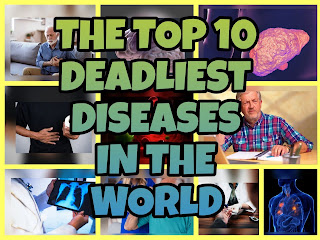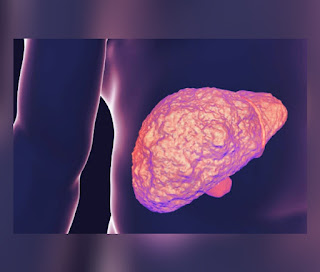Here is where your search for the deadliest diseases in the world concludes. This list includes the ten deadliest diseases, ranging from Ischemic heart disease to Cirrhosis. Diseases have had a profound impact on the world, influencing various aspects such as populations, economies, social structures, and healthcare systems, from ancient times to the present day.
Global public health and healthcare systems have been profoundly impacted by diseases. Throughout history, infectious diseases like the Black Death in the 14th century or the Spanish flu in the early 20th century have caused immense devastation, claiming countless lives, straining healthcare facilities, and causing societal upheaval. However, these tragic events have also catalysed advancements in disease monitoring, prevention, and healthcare delivery. Moreover, they have spurred the establishment of crucial international health organizations such as the World Health Organization (WHO).
Significant advancements have been achieved in comprehending, averting, and managing these illnesses; nevertheless, they persistently pose a challenge to the worldwide healthcare system. To diminish the impact of these diseases, it is vital to prioritize prevention, early identification, treatment, and international collaboration. As societies persist in confronting these formidable foes, the significance of public health, research, and medical innovation remains of utmost importance.
We've compiled a list of the most fatal diseases in the world, but countless others are just as significant. If you've missed any, please share your thoughts in the comments below.
So, the list of the top 10 deadliest diseases in the world incorporates:-
1. Ischemic Heart Disease
What is it?
Coronary artery disease (CAD) or ischemic heart disease is a medical condition characterized by the constriction or obstruction of the coronary arteries, leading to diminished blood circulation to the cardiac muscle. An adequate blood supply, rich in oxygen, is essential for the proper functioning of the heart. However, when the coronary arteries become narrowed or blocked, the heart is deprived of sufficient blood flow.
Risk Factors
Atherosclerosis, which is marked by the buildup of plaque within the arterial walls, is the predominant risk factor associated with this condition. The onset of atherosclerosis is influenced by a multitude of factors, such as:
• High cholesterol levels
• Hypertension
• Smoking
• Diabetes
• Obesity
• Sedentary lifestyle
Prevention
Here are some important steps you can take to reduce the risk of developing ischemic heart disease:
• Quit Smoking
• Manage cholesterol levels
• Control high blood pressure
• Follow a healthy diet
• Maintain a healthy weight
2. Stroke
In the event of a stroke, a medical emergency occurs when blood flow to the brain is disrupted, either by a blockage or the rupture of a blood vessel. This is a serious and potentially fatal condition that requires immediate medical attention. The consequences of a stroke can manifest in a range of physical and cognitive impairments, contingent upon the location and extent of the damage to the brain. Within minutes of a stroke, brain cells begin to perish due to the absence of oxygen and nutrients.
Risk Factors
Certain risk factors increase the likelihood of experiencing a stroke. These include:
• High blood pressure (hypertension)
• Smoking
• Diabetes
• High cholesterol levels
• Obesity
• Physical inactivity
• Excessive alcohol consumption
Prevention
Here are some important steps you can take to reduce the risk of developing stroke:
• Treat atrial fibrillation
• Exercise regularly
• Maintain a healthy weight
• Eat a healthy diet
• Manage high blood pressure
• Control diabetes
3. Respiratory Cancer
What is it?
Respiratory cancer, encompassing malignancies affecting the respiratory system such as the lungs, bronchi, trachea, and other respiratory structures, is characterized by its impact on these vital organs. Among the various forms of respiratory cancer, lung cancer and bronchial cancer are the most commonly encountered. The development of these cancers is typically a gradual process, often attributed to prolonged exposure to detrimental agents such as tobacco smoke, asbestos, radon gas, and certain industrial chemicals.
Risk Factors
Several risk factors have been identified that can increase the likelihood of developing respiratory cancer. Some of these risk factors include:
• Personal history of lung diseases
• Family history
• Occupational exposure to carcinogens
• Exposure to Radon gas
• Smoking
Prevention
Here are some important steps you can take to reduce the risk of developing respiratory cancer:
• Protect against outdoor air pollution
• Minimize exposure to radon
• Protect yourself from occupational hazards
• Limit exposure to secondhand smoke
• Avoid tobacco in all forms
4. Tuberculosis
Tuberculosis, caused by Mycobacterium tuberculosis, is a bacterial disease that poses a serious threat to public health globally. It is highly contagious and can be life-threatening, affecting not only the lungs but also other vital organs such as the kidneys, spine, and brain. The disease spreads through the air when an infected individual coughs or sneezes, making it a major concern for public health authorities.
Risk Factors
Several factors can increase an individual's risk of developing tuberculosis. These risk factors include:
• Weakened immune system
• Close contact with an infected person
• Prior TB infection
• Malnutrition
• Diabetes
• Poverty and overcrowded living conditions
Prevention
Here are some important steps you can take to reduce the risk of developing tuberculosis:
• Vaccination
• Practice good respiratory hygiene
• Maintain good ventilation
• Limit exposure to infected individuals
• Screen for tuberculosis
• Seek medical attention for symptoms
5. AIDS
What is it?
Acquired Immunodeficiency Syndrome (AIDS) is a grave and intricate health condition that arises from the Human Immunodeficiency Virus (HIV). AIDS represents the advanced phase of HIV infection, which results in a significantly weakened immune system. The destruction of CD4 cells by HIV impairs the body's capacity to combat infections and illnesses, rendering individuals vulnerable to opportunistic infections and specific forms of cancer.
Risk Factors
Here are some key risk factors associated with AIDS:
• Unprotected sexual activity
• Injecting drug use
• Blood transfusions or organ transplants
• Multiple sexual partners
• Lack of access to healthcare and education
Here are some important steps you can take to reduce the risk of developing AIDS:
• Safe sexual practices
• Blood safety
• Needle and syringe programs
• Pre-exposure prophylaxis
• HIV testing and counseling
• Prevention of mother-to-child transmission
6. Diarrheal Diseases
What is it?
Diarrheal illnesses encompass a collection of ailments distinguished by the presence of recurrent loose or liquid stools. These conditions predominantly arise from viral, bacterial, or parasitic infections, and they have the potential to impact individuals across all age groups, particularly in regions with insufficient sanitation and substandard hygiene practices. The prevalence of diarrheal diseases poses a noteworthy global health issue, contributing significantly to the overall burden of illness and mortality, particularly in developing nations.
Risk Factors
Here are some common risk factors associated with diarrheal diseases:
• Antibiotic use
• Pre-existing medical conditions
• Malnutrition and weakened immune system
• Close contact with infected individuals
• Contaminated food and water
• Poor sanitation and hygiene
Prevention
Here are some important steps you can take to reduce the risk of developing diarrheal diseases:
• Immunization
• Proper disposal of waste
• Safe food handling and preparation
• Ensure safe water and proper sanitation
• Practice good hand hygiene
7. Chronic Obstructive Pulmonary Disease
What is it?
COPD, a progressive respiratory ailment, is distinguished by enduring respiratory symptoms and restricted airflow. Its development is primarily attributed to prolonged exposure to irritants, notably cigarette smoke, although genetic factors and environmental pollutants can also exert an influence. Chronic bronchitis and emphysema are encompassed within the spectrum of COPD, both of which contribute to persistent inflammation, airway impairment, and respiratory distress.
Risk Factors
Several risk factors contribute to the development of COPD. Here are some common risk factors associated with COPD:
• Smoking
• Environmental exposure to pollutants
• Genetic Factors
• Asthma
• Respiratory Infection
• Family History
Prevention
While COPD is a chronic condition that cannot be fully cured, there are steps you can take to prevent its development or slow its progression. Here are some prevention steps for COPD:
• Don't smoke
• Avoid exposure to lung irritants
• Protect against indoor air pollution
• Take precautions during respiratory infections
• Manage asthma effectively
• Seek regular medical check-ups
8. Diabetes mellitus
What is it?
Diabetes, also known as diabetes mellitus, is a persistent metabolic condition that is marked by elevated levels of glucose (hyperglycemia) in the bloodstream. This condition arises due to the inadequate production of insulin or the inability of the body to utilize the insulin it produces effectively. Insulin is a hormone that plays a crucial role in regulating the absorption and utilization of glucose (sugar) in the cells of the body for energy.
Risk Factors
Here are some common risk factors of Diabetes Mellitus:
• High blood pressure
• Polycystic ovary syndrome (PCOS)
• Gestational diabetes
• Obesity or overweight
Prevention
Here are some essential steps you can take to reduce the risk of developing diabetes:
• Maintain a healthy weight
• Limit sedentary behaviour
• Avoid or limit sugary beverages
• Quit Smoking
• Choose low-glycemic index foods
• Stay hydrated
9. Alzheimer's disease
What is it?
Alzheimer's disease, a progressive neurological disorder, exerts its influence on the brain by inducing memory loss, cognitive decline, and behavioural alterations. This condition, which is the most prevalent type of dementia, has a profound impact on both individuals and their families. As the disease advances, individuals may encounter challenges in performing everyday activities, communicating effectively, and even identifying their close ones. In addition to its impact on memory, Alzheimer's disease also hampers judgment, decision-making abilities, and overall cognitive function.
Risk Factors
While some risk factors are beyond our control, others can be influenced. Here are some of the risk factors of Alzheimer's disease:
• Environmental factors
• Sleep disturbances
• Poor diet
• Head injuries
• Mild cognitive impairment
• Down syndrome
Prevention
While there is no guaranteed way to prevent Alzheimer's disease, certain lifestyle choices and habits may help reduce the risk or delay its onset. Here are some prevention steps you can consider:
• Manage Depression
• Protect your hearing
• Be proactive with healthcare
• Stay socially active
• Manage diabetes
• Manage blood pressure
• Follow a heart-healthy diet
10. Cirrhosis
What is it?
Chronic scarring and damage of liver tissue are the defining features of cirrhosis, a liver disease that develops gradually. The condition is frequently the result of long-term liver damage caused by chronic alcoholism, chronic hepatitis B or C infection, fatty liver disease, or autoimmune diseases. As the disease advances, the liver's healthy cells are replaced by scar tissue, which hinders the liver's normal functioning. This can result in a variety of complications, including jaundice, fluid accumulation in the abdomen, impaired blood clotting, liver cancer, and ultimately liver failure.
Risk Factors
Several factors can increase the risk of developing cirrhosis. Here are some of the primary risk factors associated with cirrhosis:
• Chronic biliary obstruction
• Genetic disorders
• Chronic alcohol abuse
• Chronic viral hepatitis
Prevention
Here are some important steps you can take to reduce the risk of developing Cirrhosis:
• Get vaccinated
• Use sterile needles
• Practice good hygiene
• Avoid toxic substances
• Avoid excessive use of over-the-counter medications
• Practice moderation with herbal supplements














0 Comments